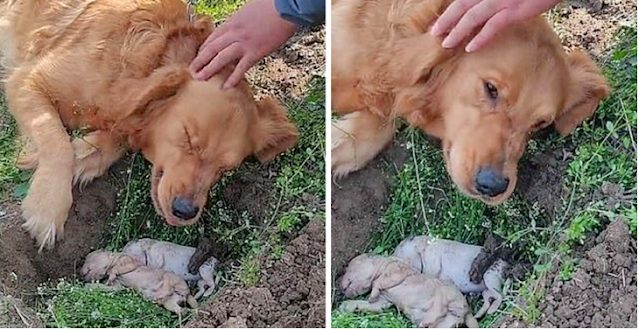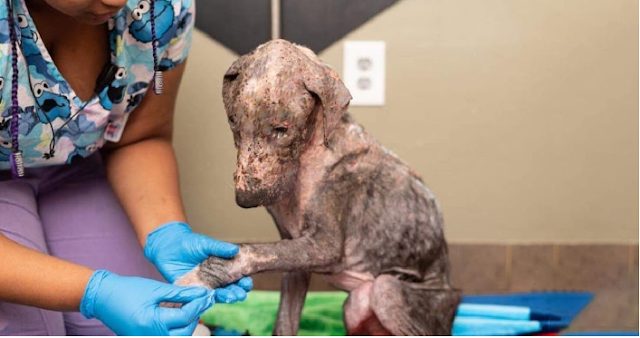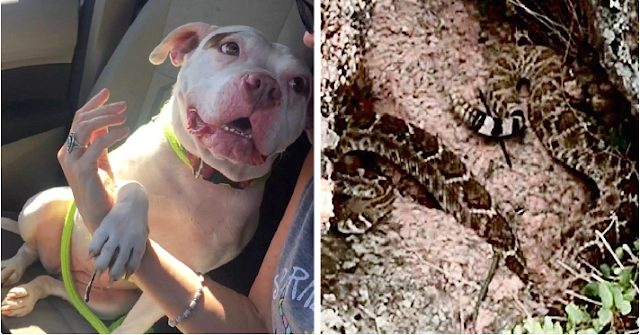Red facial skin and a patch of glossy blue contrast beautifully on a bird wearing a long tail and otherwise white plumage!
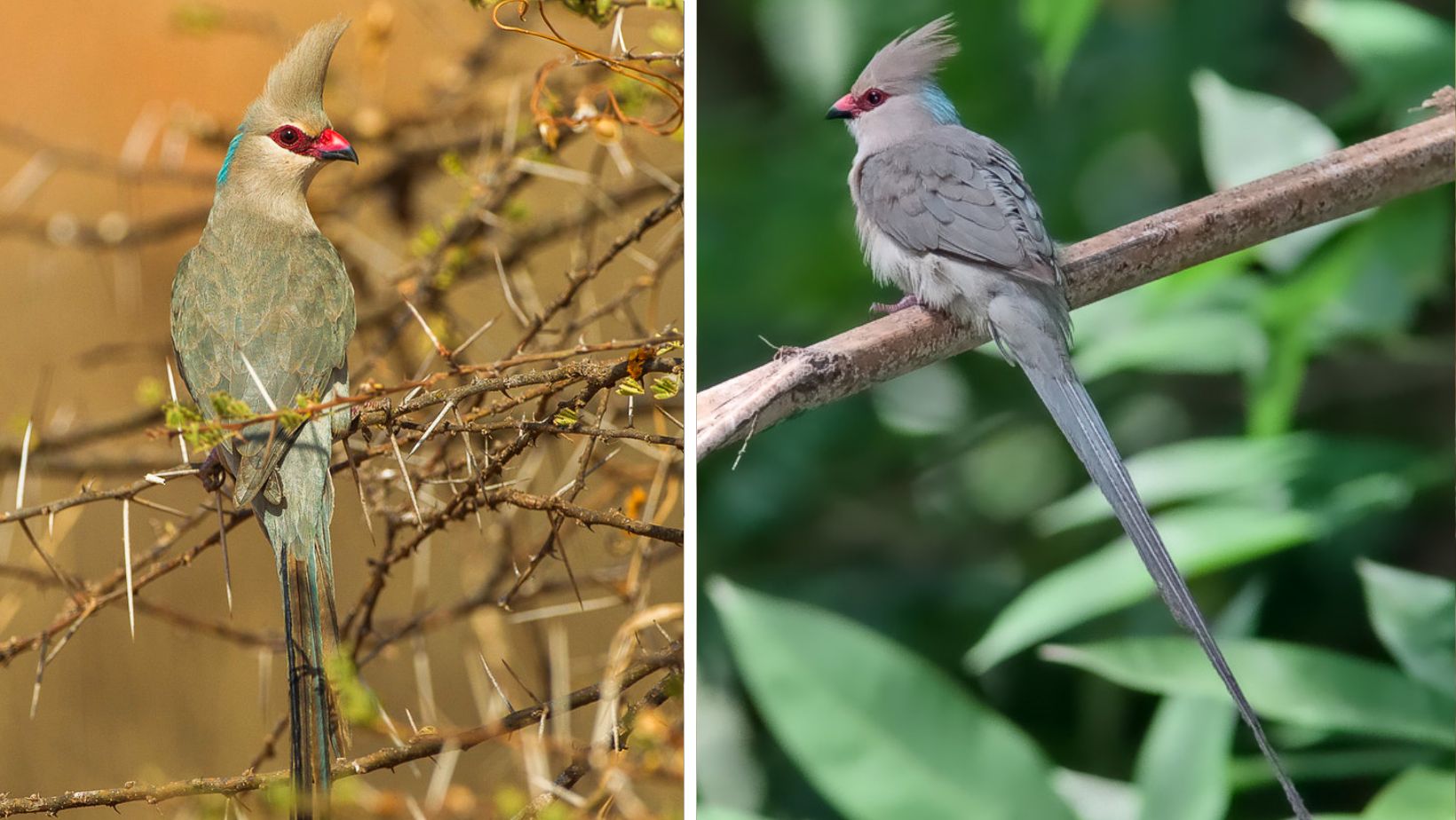
MEET THE BLUE-NAPED MOUSEBIRD
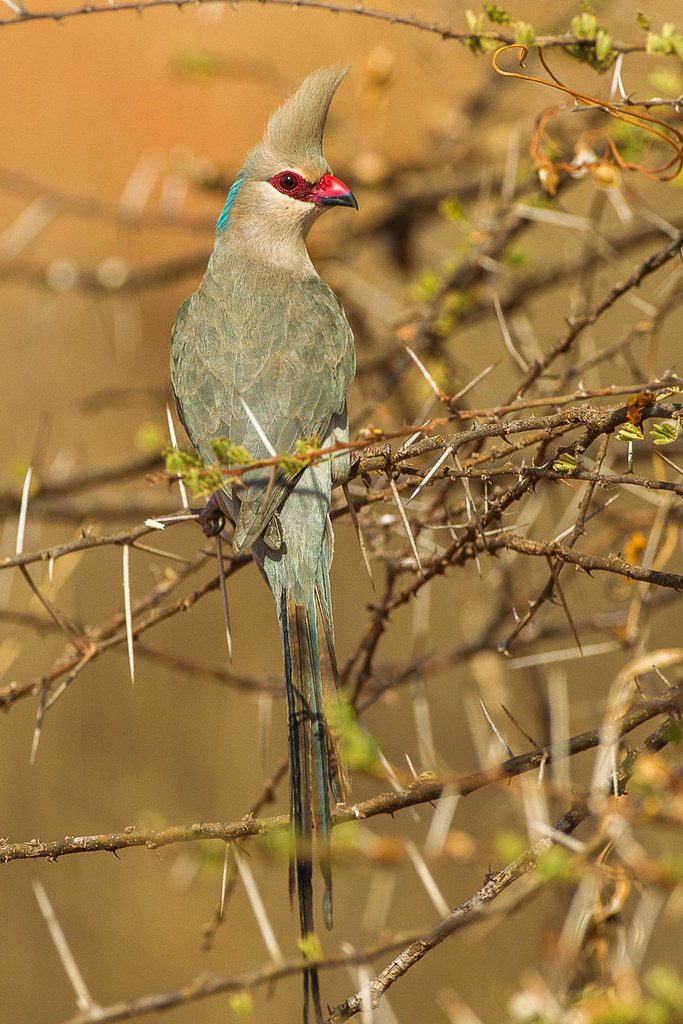
The blue-naped mousebird (Urocolius macrourus) is a pretty small bird measuring little more than 13 – 14 inches in length. The main characteristic of this bird is the long tail and the turquoise blue patch on the nape of the neck. Adult birds have mainly gray-white to ash brown plumage, a long tail, a crest on the top of the head, and a black-red bill finished off by the blue nape.
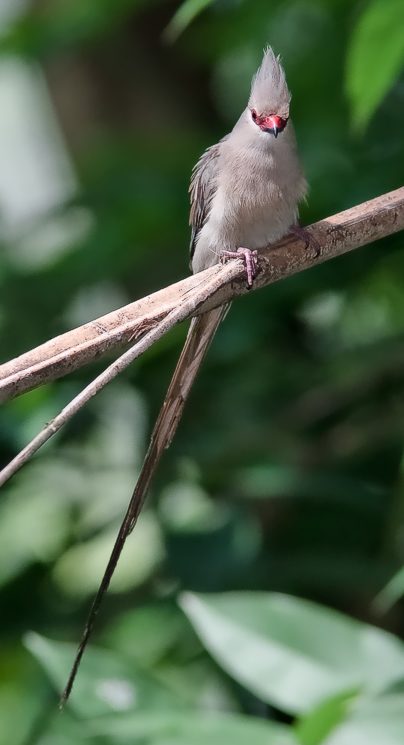
Juvenile members of this species lack the blue nape and have pink facial skin and a bill-tinged green rather than red.
Unlike other birds, they are able to rotate all four toes to face forward allowing them to feed upside down, hold the food with their feet, and perch with their legs positioned at strange angles.
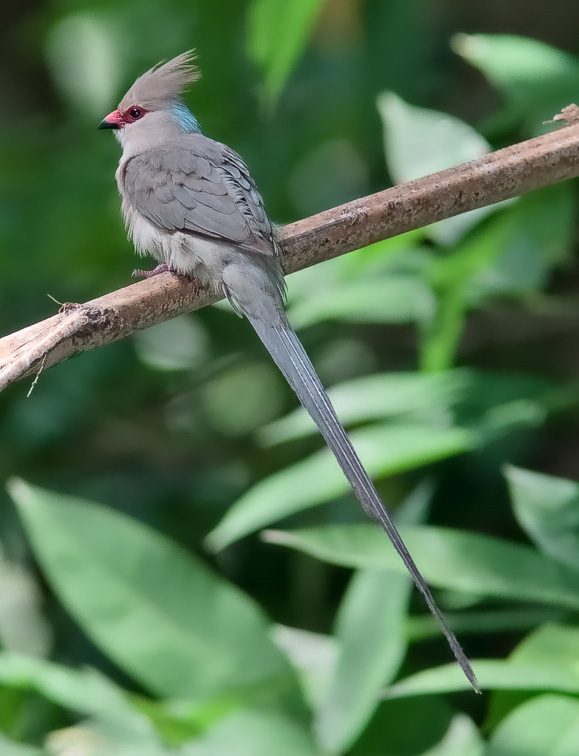
The range of the Blue-naped Mousebirds stretches from the western coast of Sudan, Ethiopia, and Somalia in the East, south through East Africa to the eastern borders of the Democratic Republic of the Congo.
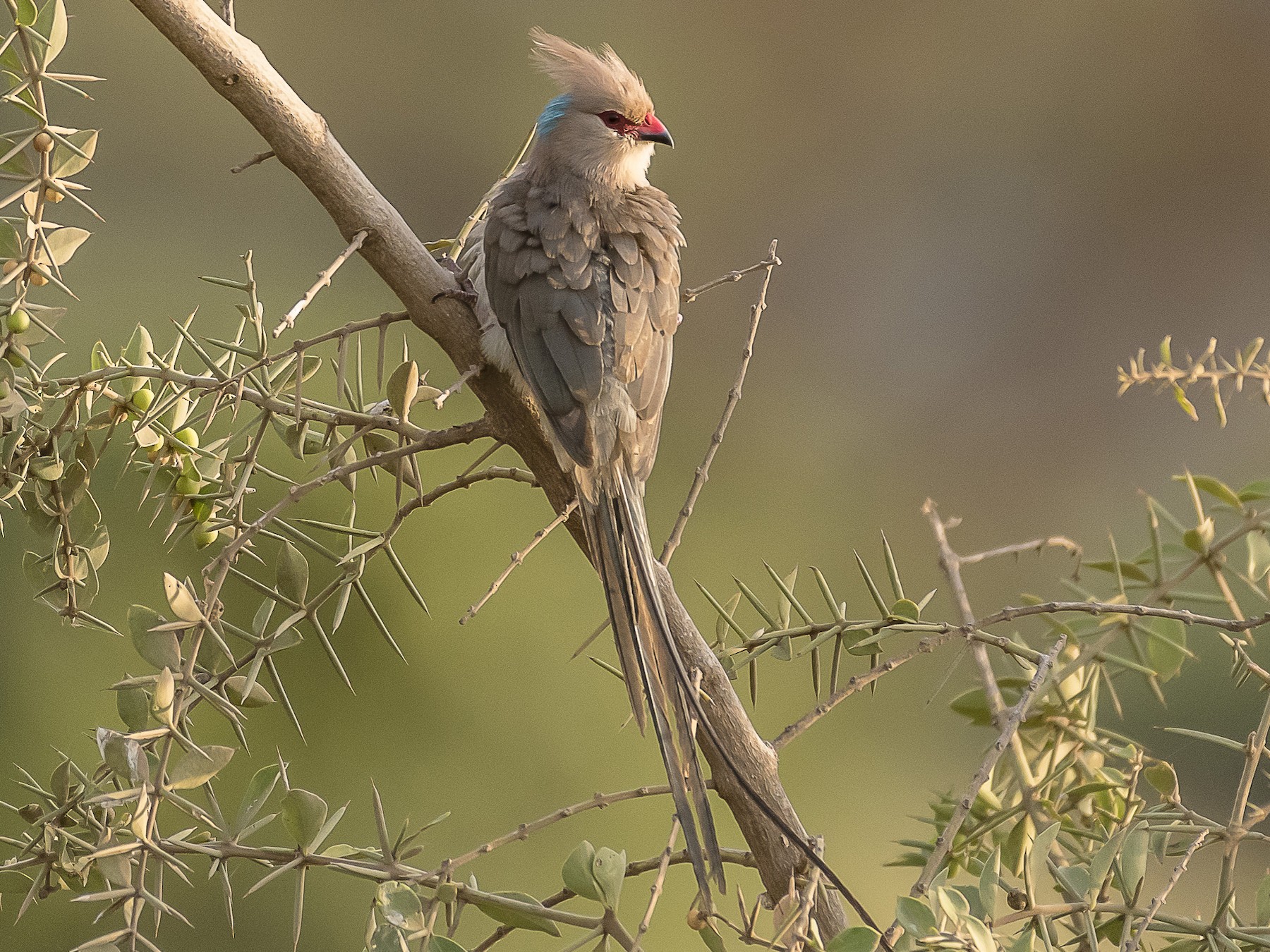
These birds prefer semi-desert and dry habitats in various regions of East Africa, favoring bush and open wooded areas.
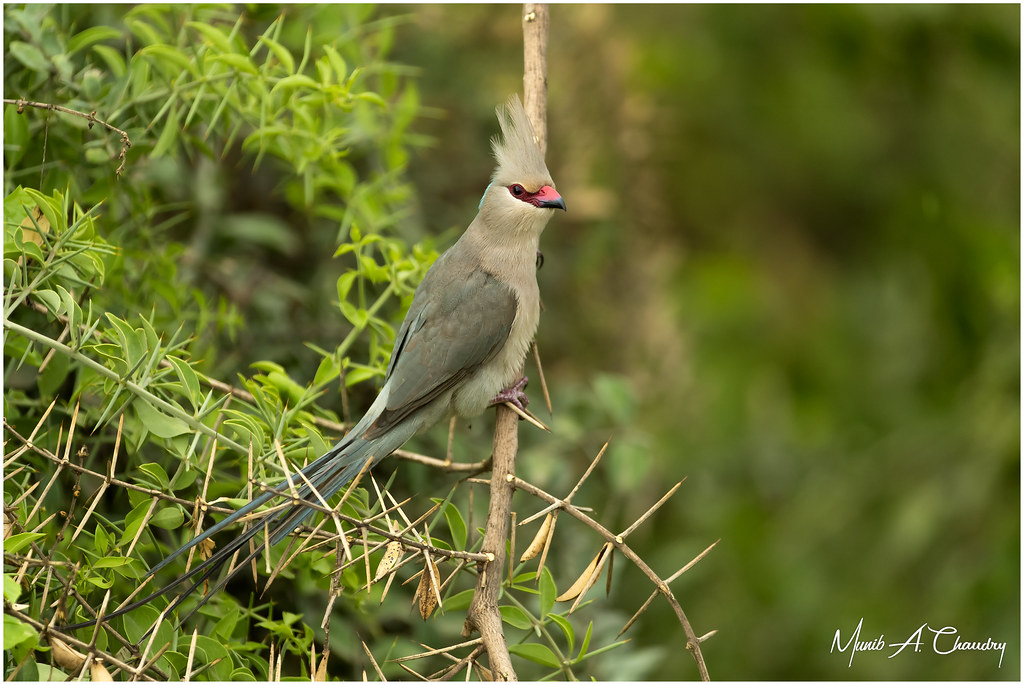
Like all members of the mousebird family, Blue-naped Mousebirds mainly dine on fruits, berries, leaves, buds, flowers, nectar, and seeds. They may also eat soil and swallow pebbles to assist in grinding up vegetation to help digestion.
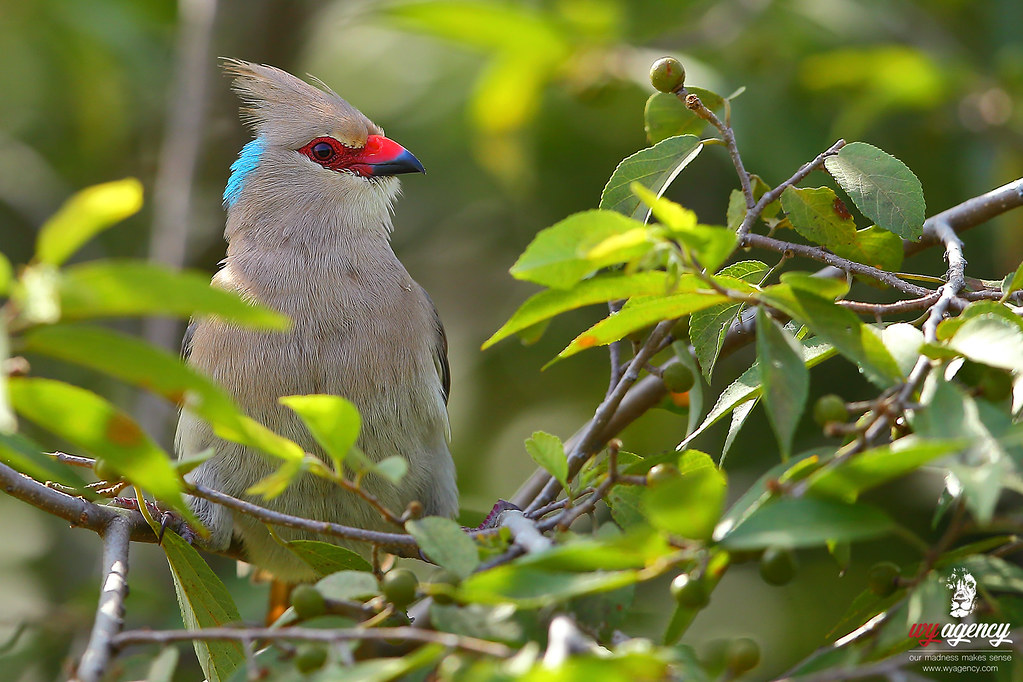
Blue-naped Mousebirds are capable of breeding throughout the year. Their nests are relatively large for birds of their size. Both the male and the female build a nest out of pits of vegetation and animal material, as well as items found in their environment (such as cloth and paper). The female will then lay a clutch of up to 7 eggs which are then incubated for around 14 days. Parents, as well as helpers (often the young from previous seasons), assist in raising the chicks, which usually leave the nest when they are 17 – 18 days old. They are generally independent when they are about one month old.
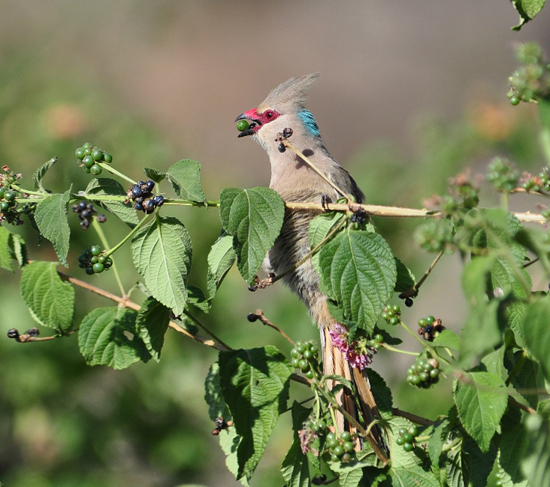
These birds are considered as of Least Concern on the IUCN Red List.
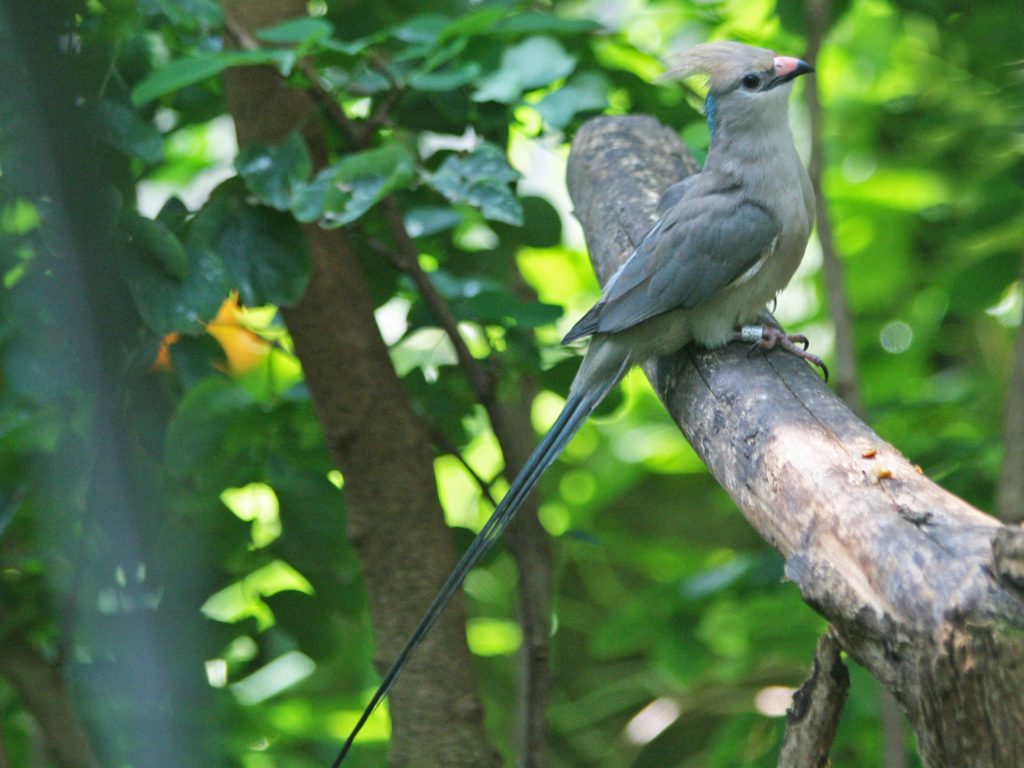
YOU CAN WATCH THIS BIRD RIGHT HERE IN THE VIDEO BELOW:
